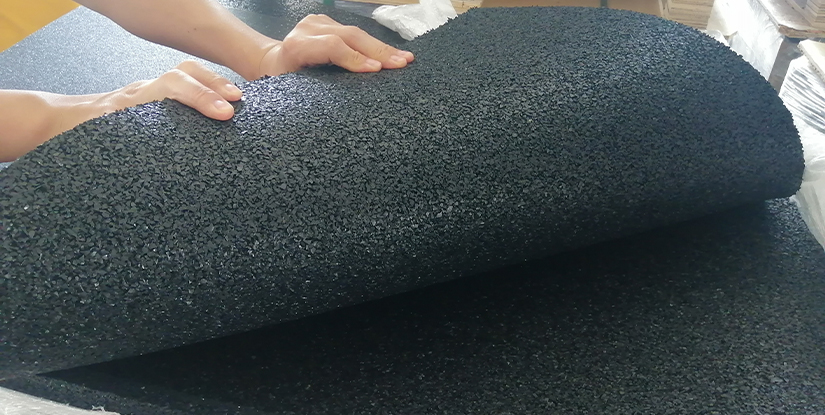Treadmill Floor Protector Mat – Guide to Choosing, Installing & Maintaining

Understanding Treadmill Floor Protector Mats
A treadmill floor protector mat is a low-profile, durable barrier placed beneath a treadmill to protect subflooring, reduce noise and vibration, and improve equipment longevity. Selecting the right mat is a straightforward investment that prevents indentations, scratches, and damage from sweat, dust, and machine movement. This guide provides a practical overview of materials, sizing, installation, maintenance, and purchasing considerations to help you make an informed decision.
Key Benefits
Using a treadmill mat delivers multiple benefits: it protects hardwood, laminate, tile, and carpet from friction and moisture; reduces transmitted noise and vibration; stabilizes the treadmill and prevents slipping; and simplifies cleaning under and around the machine. For home gyms and commercial settings, mats provide a measurable improvement in floor longevity and user experience.
Common Materials and Their Properties
Understanding material composition helps match mat performance to needs:
- Vinyl: Affordable, waterproof, and easy to clean. Vinyl mats provide good surface protection but vary in thickness and cushioning.
- Rubber (natural or synthetic): Durable, excellent vibration absorption, and superior anti-slip properties. Rubber is heavier and often preferred for high-impact and heavy equipment.
- PVC/Composite blends: Balance cost and performance; typically resilient and resistant to oil and sweat.
- Foam-backed mats: Lightweight and comfortable underfoot, but may compress over time and are less durable under heavy treadmills.
Thickness and Density: What Matters
Thickness is typically measured in millimeters or inches. Thicker mats (6 mm / 1/4" and up) offer better vibration isolation and floor protection, but density determines long-term resilience. High-density rubber or closed-cell foam maintains shape under load and provides superior shock absorption. For heavy commercial treadmills, choose dense rubber mats 8–10 mm or more. For home treadmills, 4–6 mm often strikes a balance between protection and cost.
Sizing and Coverage Recommendations
Size should accommodate the treadmill footprint plus additional front and rear clearance for maintenance access and foot traffic. Standard guidelines:
- Home treadmills: Minimum 36" x 72" (approx.) to cover base and allow space at both ends.
- Large or folding treadmills: 40" x 80" or larger to ensure full coverage when extended.
- Commercial setups: Custom-cut or interlocking tiles to cover multiple machines and walkways.
Installation Best Practices
Install the mat on a clean, dry surface. For longer mats, unroll and allow time to flatten before placing equipment. Position the treadmill centrally to distribute weight evenly. Avoid folding or creasing; if the mat curls at the edges, use weights to flatten it for 24–48 hours. For interlocking tiles, ensure edges lock tightly to prevent gaps.
Noise and Vibration Reduction
Mats reduce airborne noise and structural vibration transmitted through floors. High-density rubber mats provide the best vibration damping, while thicker foam can reduce impact sound but may compress under sustained load. For apartments or multi-floor buildings, invest in mats specifically rated for vibration isolation and consider combining with underlayments designed for sound control.
Cleaning and Maintenance
Regular maintenance extends mat life: sweep or vacuum weekly to remove grit, and wipe with a mild detergent solution as needed. Avoid harsh solvents that can degrade rubber or vinyl. For stubborn stains, use manufacturer-recommended cleaners. Inspect the mat periodically for wear, compression, or tears, and replace if structural integrity is compromised.
Compatibility with Different Floor Types
Match the mat material to flooring type to maximize protection: use thicker rubber on hardwood and tile to prevent indentations; vinyl or PVC can work on carpeted areas to stabilize and protect underlying fibers. For floating floors or engineered wood, a mat with good anti-slip and non-marking properties is crucial to prevent movement that can damage floor seams.
Buying Tips and Cost Considerations
Prioritize material performance and size over minimal cost. Check weight capacity, warranty terms, and whether the mat is non-marking and odor-free. Measure your treadmill footprint including incline range and ensure adequate front and rear clearance. For commercial environments, consider modular interlocking systems that allow expansion and easy replacement of damaged sections.
Environmental and Safety Factors
Choose mats with low VOC emissions to maintain indoor air quality. Look for non-toxic, recyclable options where possible. Ensure edges are beveled or secured to prevent tripping hazards, and confirm mats remain stable under heavy movement to reduce risk of equipment slippage.
Conclusion
Investing in a quality treadmill floor protector mat preserves flooring, reduces noise, improves treadmill stability, and simplifies maintenance. Consider material, thickness, density, and size in relation to your treadmill model and floor type. Proper selection and upkeep will deliver long-term protection and a better workout environment.
FAQs
- Q: Do I need a mat for a folding treadmill? A: Yes, to protect floors and reduce noise; use a mat sized for the treadmill when unfolded.
- Q: How thick should my mat be? A: Home use: 4–6 mm; heavy or commercial use: 8–10 mm or more.
- Q: Can mats damage hardwood floors? A: Non-marking, high-quality mats are safe; avoid mats that trap moisture or have abrasive backing.
- Q: Are rubber mats better than vinyl? A: Rubber offers superior vibration damping and durability; vinyl is lighter and more affordable.
- Q: How do I clean a treadmill mat? A: Sweep or vacuum, then wipe with mild detergent and water; avoid harsh chemicals.
- Q: Will a mat reduce treadmill noise? A: Yes, high-density mats significantly reduce vibration and impact noise.
- Q: Can I place a mat on carpet? A: Yes, mats stabilize the treadmill and protect carpet fibers; choose a thicker material for better support.
- Q: How long do mats last? A: With normal use and maintenance, quality mats last several years; replace when compressed or torn.
- Q: Should edges be beveled? A: Beveled edges reduce trip risk and improve aesthetics; recommended for walkways.

